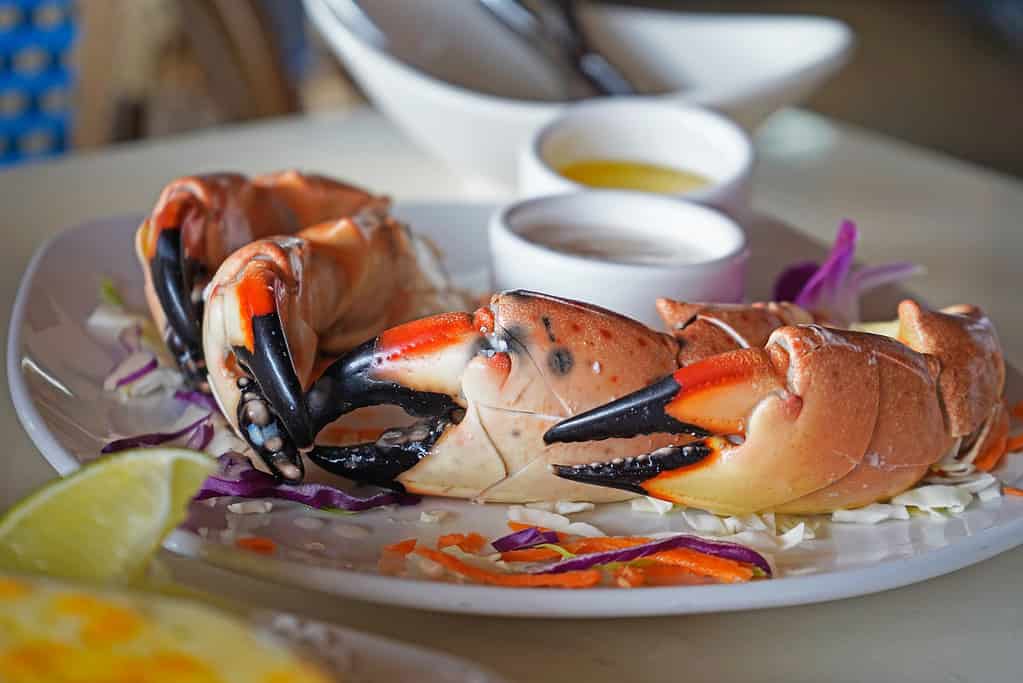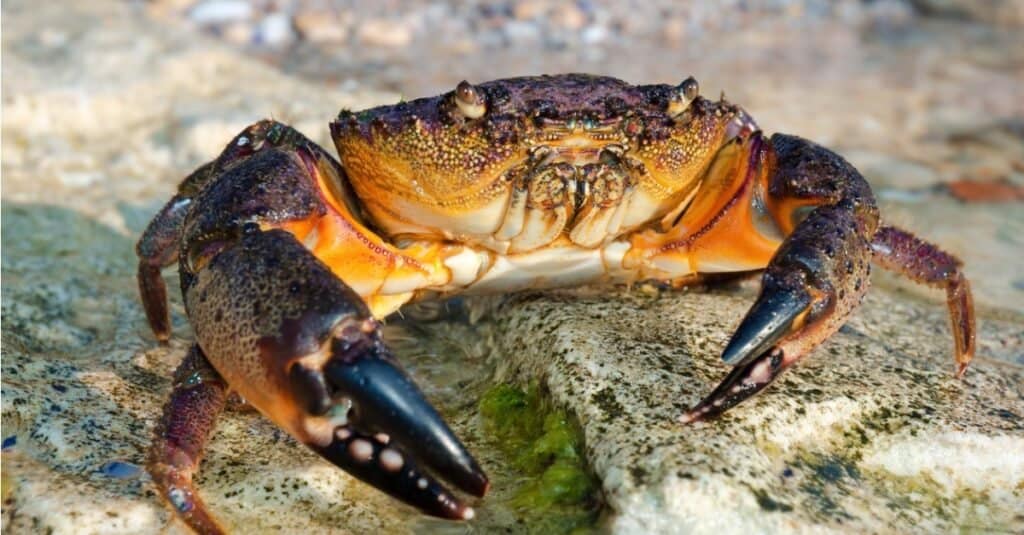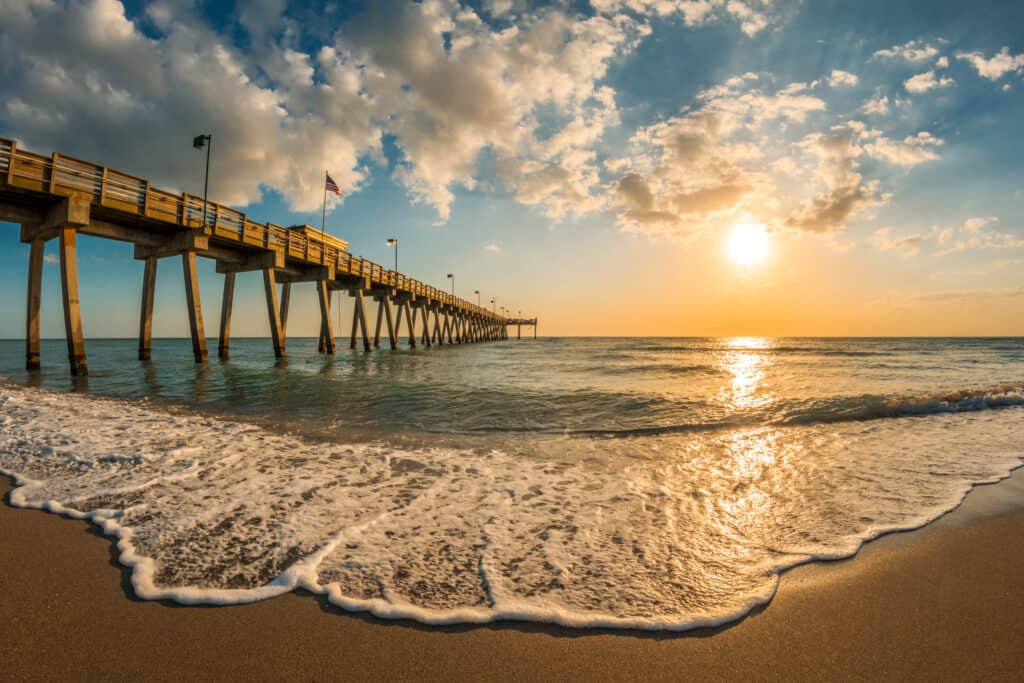
Succulent Florida stone crab claw meat is served chilled in the shell with mustard dipping sauce or melted butter.
©Kriste Sorokaite/iStock via Getty Images
Stone crabs are found almost exclusively in southern Florida. The delicacy is one of the state’s top commercial seafood products. Because of the limited season for harvesting stone crabs and the narrow geographic region where they live, this culinary delight is a sought-after luxury found only at certain times of the year. It’s also a sustainable seafood, hence, the excitement for seafood lovers surrounding this limited commodity.
The meat from stone crabs’ claws is firm, with a similar texture to lobster meat. The taste is described as sweet and succulent. The claws are typically served chilled in the shell with mustard dipping sauce or melted butter.
When is stone crab season in Florida? Read on to find out all about this southern Florida delicacy.

Florida stone crabs have claws strong enough to break an oyster’s shell.
©iStock.com/connect11
When Does Stone Crab Season Start and End in Florida?
The official stone crab harvesting season, according to the Florida Fish and Wildlife Conservation Commission (FWC), begins each year on October 15th and remains open until May 1st. On May 2nd, the season is closed until the following October.
Crab season is carefully maintained by the Florida government to protect the species from being overfished. By limiting crab harvesting to specific dates, stone crabs have remained abundant and not fallen prey to the dangers of dwindling populations due to overfishing.
What Are the Regulations for Harvesting Stone Crabs?
Florida law regulates many aspects of stone crab fishing practices beyond the seasonal dates for harvesting.
Stone crabs have the unique ability to easily shed a claw to escape from predators. They can grow their claws back in one to three years. Florida harvesters are legally allowed to remove the claws from a stone crab during the season and send the crab back into the water. The crab will live to regrow its claws, ensuring a healthy population of stone crabs.
Because of the limited season and regulations for harvesting the claws, stone crabs can be an expensive meal.
Some other state regulations on harvesting crabs include the following:
- It’s not legal to harvest the whole stone crab. Fishers remove the claws only and return the crabs to the water.
- Claws must be at least 2 and 3/4 inches long. Harvesters can take both claws. However, leaving one for protection is better for the crab’s chance of survival.
- Claws must be removed carefully for regeneration to occur. Further, care must be taken not to injure the crab’s body.
- It’s illegal to remove claws from egg-bearing females.
- Recreational harvesters are limited to 1 gallon of claws per person or 2 gallons per vessel.
Do You Need a License to Harvest Stone Crabs?
Yes, a license is required. To harvest stone crab claws, recreational fishers aged 16 or above must complete an online registration form before setting traps. There are no fees for the license, and it’s done to help the FWC collect information about recreational harvesters. Harvesters under age 16 don’t need to register for a license but must mark their traps with their name and address.
How Do Responsible Harvesting Practices Preserve the Florida Stone Crab for Future Seasons?
People have been enjoying stone crab claws since the 1890s. Before the sustainable harvesting practices, fishers used to collect the crabs, pop off their claws, and throw the bodies away. However, in recent years more sustainable practices are required.

People have been enjoying Florida’s delicious stone crab claws since the 1890s.
©Jim Schwabel/Shutterstock.com
Unlike other crab species, the stone crab can survive having its claws removed, but only if it’s done responsibly. If the harvester pops off the crab’s claw while keeping the crab alive, the crab will not only live but can regrow its claw. It’s similar to the way a lizard can regrow a tail. However, the crab can only regrow claws that were removed on clean breaks. Harvesters need to be very careful to remove the claw properly.
By only taking the claw and sending the crab back into the ocean, stone crabs are a renewable food source. The stone crab population is ensured to remain strong, and seafood lovers will get to enjoy this special delicacy for many future seasons.
The photo featured at the top of this post is © Alexcrab/iStock via Getty Images
Thank you for reading! Have some feedback for us? Contact the AZ Animals editorial team.







